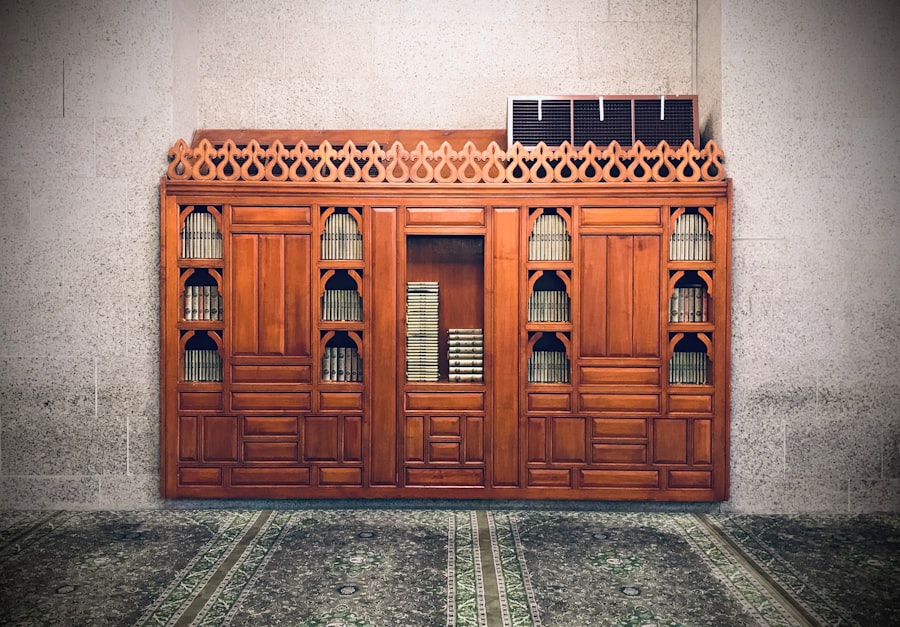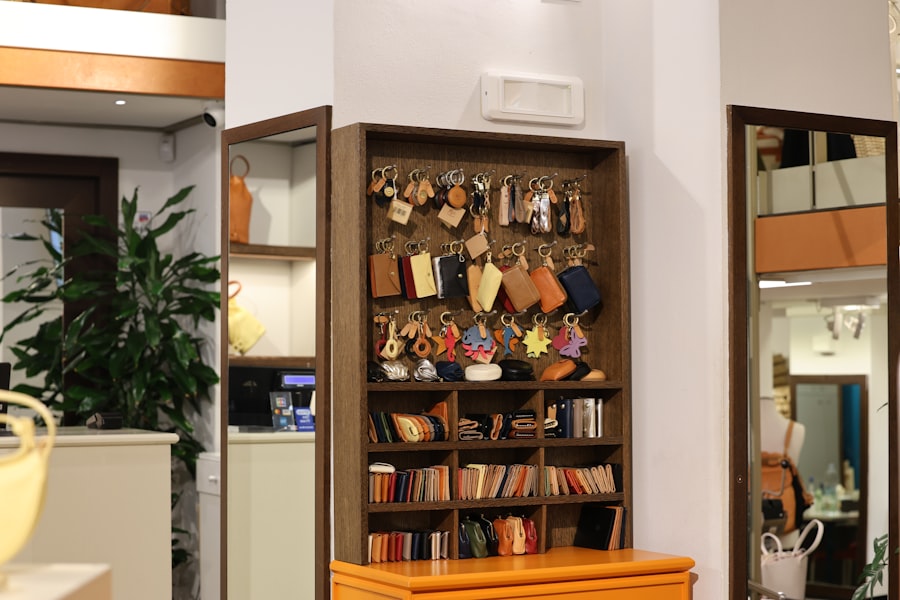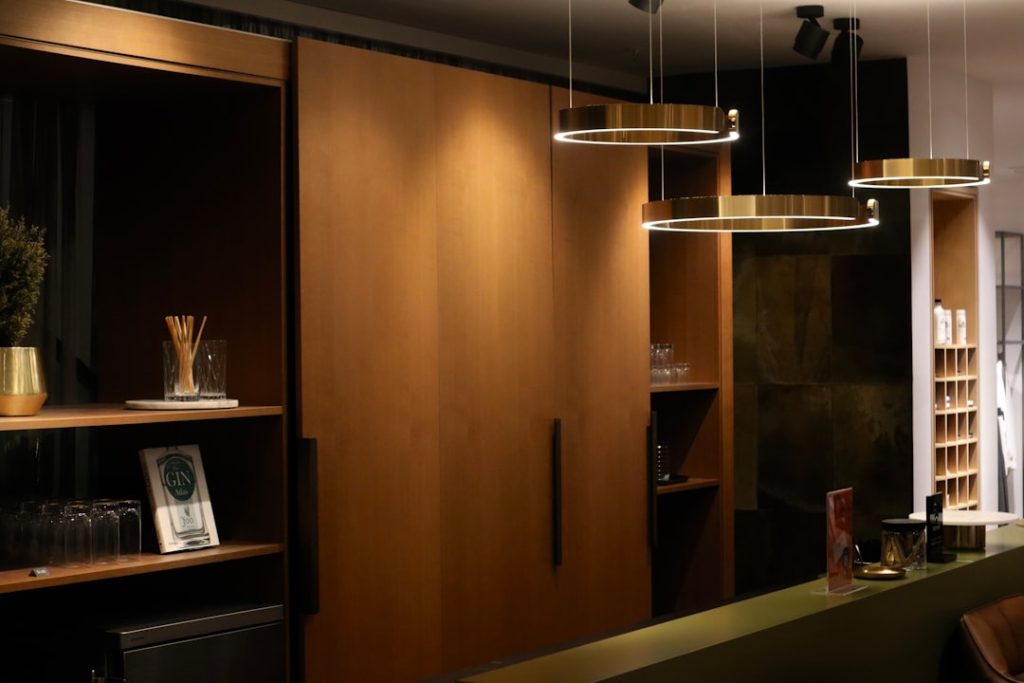Custom cabinets have become a hallmark of modern interior design, offering homeowners the opportunity to create personalized spaces that reflect their unique tastes and functional needs. Unlike stock cabinets, which are mass-produced and often limited in style and size, custom cabinets are tailored to fit specific dimensions, styles, and preferences. This bespoke approach allows for a level of creativity and individuality that can transform any room, whether it be a kitchen, bathroom, or home office.
The rise in popularity of custom cabinetry can be attributed to the growing desire for personalized living spaces that not only serve practical purposes but also enhance the aesthetic appeal of a home. The process of designing custom cabinets begins with understanding the homeowner’s vision. This involves a collaborative effort between the homeowner and a skilled cabinet maker or designer who can translate ideas into tangible designs.
From selecting the right materials to determining the layout and functionality, every aspect of custom cabinetry is meticulously planned. This attention to detail ensures that the final product not only meets the homeowner’s expectations but also complements the overall design of the home. As we delve deeper into the world of custom cabinets, we will explore their numerous benefits, design options, and maintenance considerations.
Key Takeaways
- Custom cabinets offer personalized design tailored to individual needs and spaces.
- They provide enhanced functionality, durability, and aesthetic appeal compared to standard options.
- Selecting the right style and material is crucial for matching your home’s decor and ensuring longevity.
- Custom designs can maximize storage efficiency and optimize available space.
- Proper installation, maintenance, and budgeting are key to getting the most value from custom cabinets.
Benefits of Custom Cabinets
One of the most significant advantages of custom cabinets is their ability to maximize space efficiency. In many homes, particularly those with unconventional layouts or limited square footage, stock cabinets may not fit optimally or utilize space effectively. Custom cabinets can be designed to fit into awkward corners, under stairs, or in other challenging areas, ensuring that every inch of available space is utilized.
This tailored approach not only enhances storage capacity but also contributes to a more organized and functional environment. In addition to space optimization, custom cabinets offer unparalleled quality and craftsmanship. Unlike mass-produced options that may compromise on materials and construction methods, custom cabinets are often built using high-quality woods and finishes.
Skilled artisans take the time to ensure that each piece is constructed with precision, resulting in durable products that can withstand daily use. This level of craftsmanship often translates into longer-lasting cabinets that require fewer repairs or replacements over time, making them a wise investment for homeowners looking to enhance their living spaces.
Choosing the Right Style and Material

Selecting the appropriate style and material for custom cabinets is a crucial step in the design process. The style should harmonize with the overall aesthetic of the home while also reflecting the homeowner’s personal taste. Popular styles include traditional, contemporary, rustic, and transitional designs.
For instance, traditional cabinets often feature intricate moldings and rich wood finishes, while contemporary styles may emphasize clean lines and minimalist aesthetics. Homeowners should consider how their chosen style will complement existing decor and furnishings to create a cohesive look throughout their space. Material selection is equally important when designing custom cabinets.
The choice of wood can significantly impact both the appearance and durability of the cabinets. Hardwoods such as oak, maple, cherry, and walnut are popular choices due to their strength and natural beauty. Each type of wood has its unique grain patterns and color variations, allowing homeowners to select materials that align with their desired aesthetic.
Additionally, finishes such as stains, paints, or glazes can further enhance the visual appeal of the cabinets while providing protection against wear and tear. Understanding the characteristics of different materials will empower homeowners to make informed decisions that align with their design vision.
Custom Cabinet Design Options
| Design Option | Material | Finish | Door Style | Average Lead Time (weeks) | Durability Rating (1-10) | Customization Level |
|---|---|---|---|---|---|---|
| Shaker | Solid Wood | Matte Paint | Flat Panel | 4 | 8 | High |
| Raised Panel | Medium Density Fiberboard (MDF) | Glossy Lacquer | Raised Panel | 5 | 7 | Medium |
| Glass Front | Solid Wood Frame with Glass | Stained Wood | Glass Insert | 6 | 6 | High |
| Slab | Plywood | Veneer Finish | Flat Slab | 3 | 7 | Low |
| Beadboard | Solid Wood | Painted | Beaded Panel | 5 | 7 | Medium |
The design options for custom cabinets are virtually limitless, allowing homeowners to create unique solutions tailored to their specific needs. One popular option is incorporating specialized features such as pull-out shelves, lazy Susans, or built-in dividers that enhance functionality and accessibility. These features can make it easier to organize kitchen utensils or bathroom essentials, ensuring that everything has its designated place.
Additionally, custom cabinetry can include integrated lighting solutions that illuminate workspaces or highlight decorative items displayed within glass-fronted cabinets. Another design consideration is the incorporation of hardware and accessories that complement the overall look of the cabinets. From knobs and pulls to hinges and drawer slides, these elements can significantly influence the final appearance of the cabinetry.
Homeowners can choose from a wide array of finishes—such as brushed nickel, oil-rubbed bronze, or polished chrome—to achieve a cohesive look that aligns with their chosen style. Furthermore, custom cabinet designs can also accommodate modern technology by integrating charging stations or built-in speakers, making them not only functional but also relevant in today’s tech-savvy homes.
Maximizing Space and Storage
Maximizing space and storage is one of the primary reasons homeowners opt for custom cabinets. In kitchens, for example, custom cabinetry can be designed to include deep drawers for pots and pans, pull-out spice racks, or even hidden trash bins that keep clutter at bay. By utilizing vertical space with tall cabinets that reach up to the ceiling, homeowners can take advantage of otherwise unused areas while creating an illusion of height in smaller rooms.
In addition to kitchens, custom cabinets can significantly enhance storage in other areas of the home as well. In bathrooms, cabinetry can be designed to include built-in shelving for toiletries or linen storage that fits seamlessly into the overall design. In living rooms or home offices, custom cabinetry can provide stylish solutions for bookshelves or media centers that accommodate electronics while maintaining an organized appearance.
By thoughtfully considering how each space will be used, homeowners can create custom cabinet solutions that not only meet their storage needs but also contribute to a more functional living environment.
Custom Cabinet Installation Process

The installation process for custom cabinets is a critical phase that requires careful planning and execution. Once the design has been finalized and materials selected, skilled craftsmen will begin constructing the cabinets in a workshop setting. This process typically involves cutting wood to precise dimensions, assembling components using advanced joinery techniques, and applying finishes to achieve the desired look.
The craftsmanship involved in this stage is essential for ensuring that the final product meets both aesthetic and functional standards. Once construction is complete, the installation team will schedule a time to install the cabinets in the home. This process often begins with preparing the space by removing existing cabinetry or fixtures if necessary.
The installation team will then carefully position each cabinet according to the pre-determined layout, ensuring that they are level and securely anchored to walls or floors as needed. Attention to detail during installation is paramount; even minor misalignments can affect both functionality and appearance. After installation is complete, homeowners can expect a thorough cleanup process where any debris from construction is removed, leaving them with a beautifully finished product ready for use.
Maintaining and Caring for Custom Cabinets
Maintaining custom cabinets is essential for preserving their beauty and functionality over time. Regular cleaning is one of the simplest yet most effective ways to care for cabinetry. Homeowners should use a soft cloth or sponge along with mild soap and water to wipe down surfaces regularly.
Avoiding harsh chemicals or abrasive cleaners is crucial as these can damage finishes or scratch surfaces. For wooden cabinets, periodic application of furniture polish or wax can help maintain luster while providing an additional layer of protection against wear. In addition to routine cleaning, homeowners should also be mindful of humidity levels in their homes.
Wood is susceptible to changes in moisture content; excessive humidity can lead to warping or swelling while overly dry conditions may cause cracking or splitting. Using humidifiers or dehumidifiers as needed can help maintain an optimal environment for wooden cabinetry. Furthermore, addressing any minor repairs promptly—such as tightening loose hardware or fixing scratches—can prevent more significant issues from developing over time.
Budgeting for Custom Cabinets
Budgeting for custom cabinets requires careful consideration of various factors including materials, design complexity, and installation costs. Unlike stock cabinetry options that come with fixed price points, custom cabinets can vary widely in cost based on individual choices made throughout the design process. Homeowners should begin by establishing a clear budget range before consulting with designers or cabinet makers; this will help guide decisions regarding materials and features without overspending.
When estimating costs, it’s important to account for both upfront expenses as well as potential long-term savings associated with quality craftsmanship. While custom cabinets may have a higher initial investment compared to stock options, their durability and tailored design often result in lower maintenance costs over time. Additionally, investing in high-quality materials can enhance property value; well-designed custom cabinetry is often seen as an attractive feature by potential buyers should homeowners decide to sell in the future.
By carefully planning their budget and considering both immediate needs and long-term benefits, homeowners can make informed decisions that align with their financial goals while achieving their desired aesthetic outcomes.



